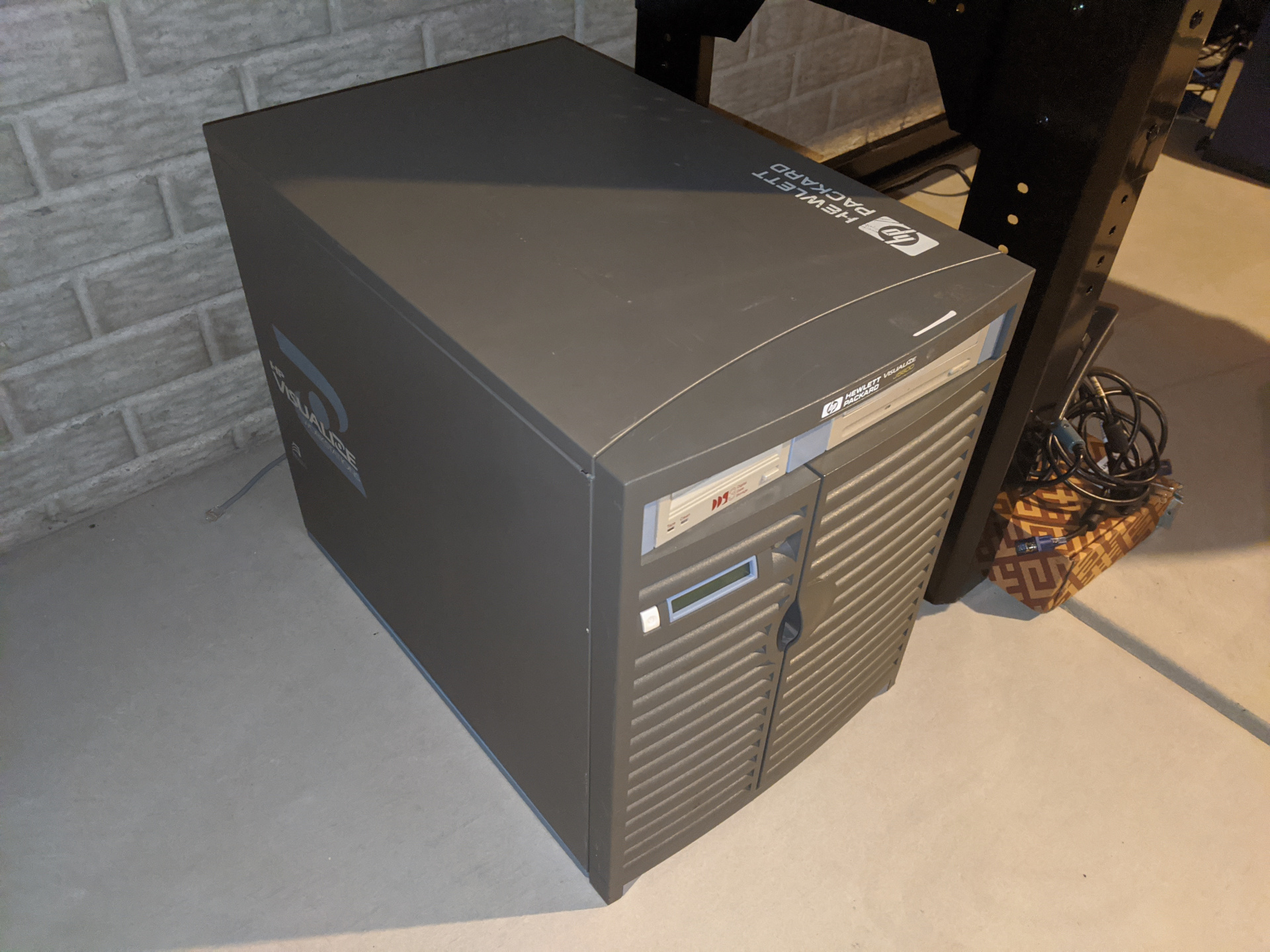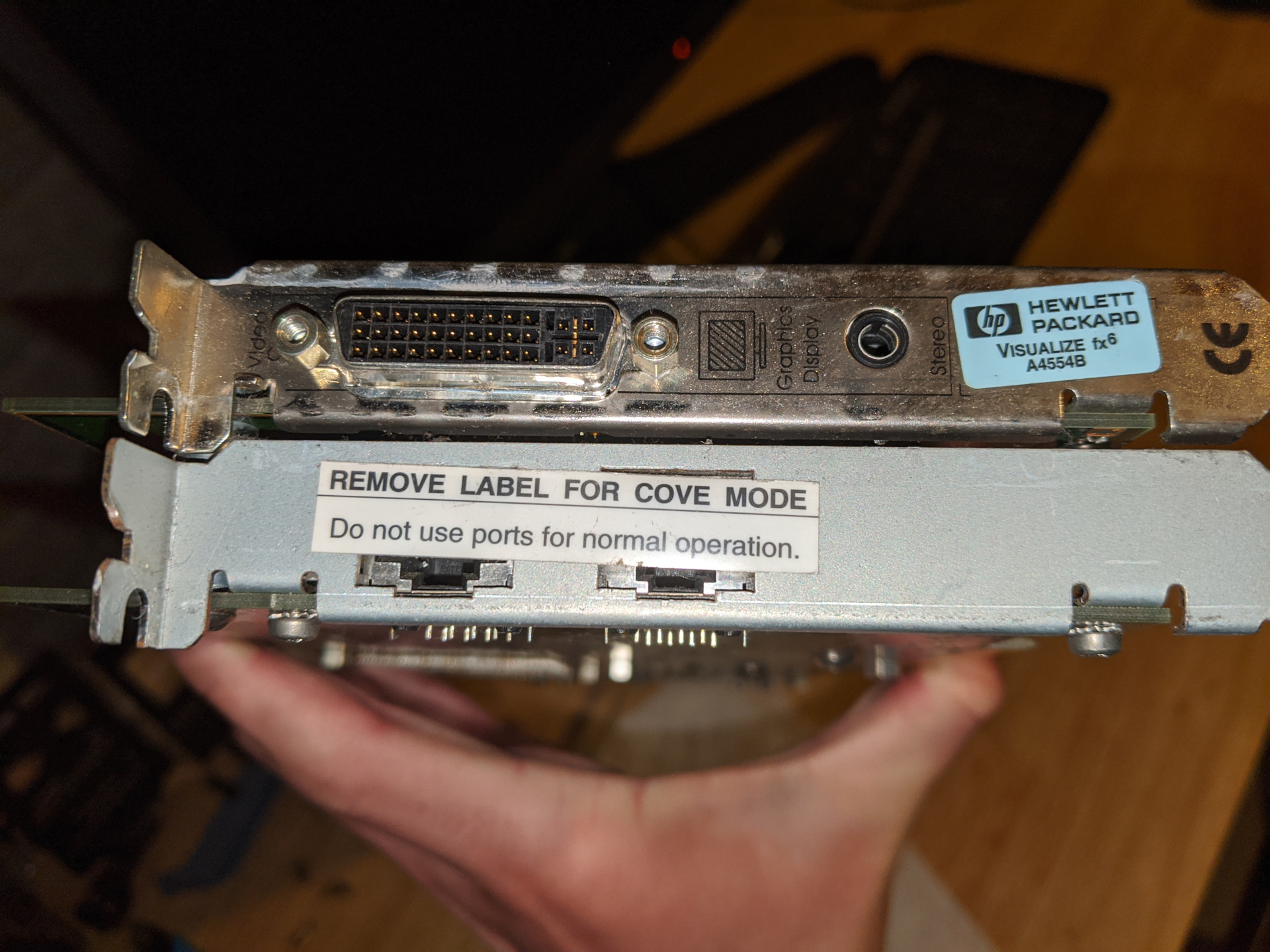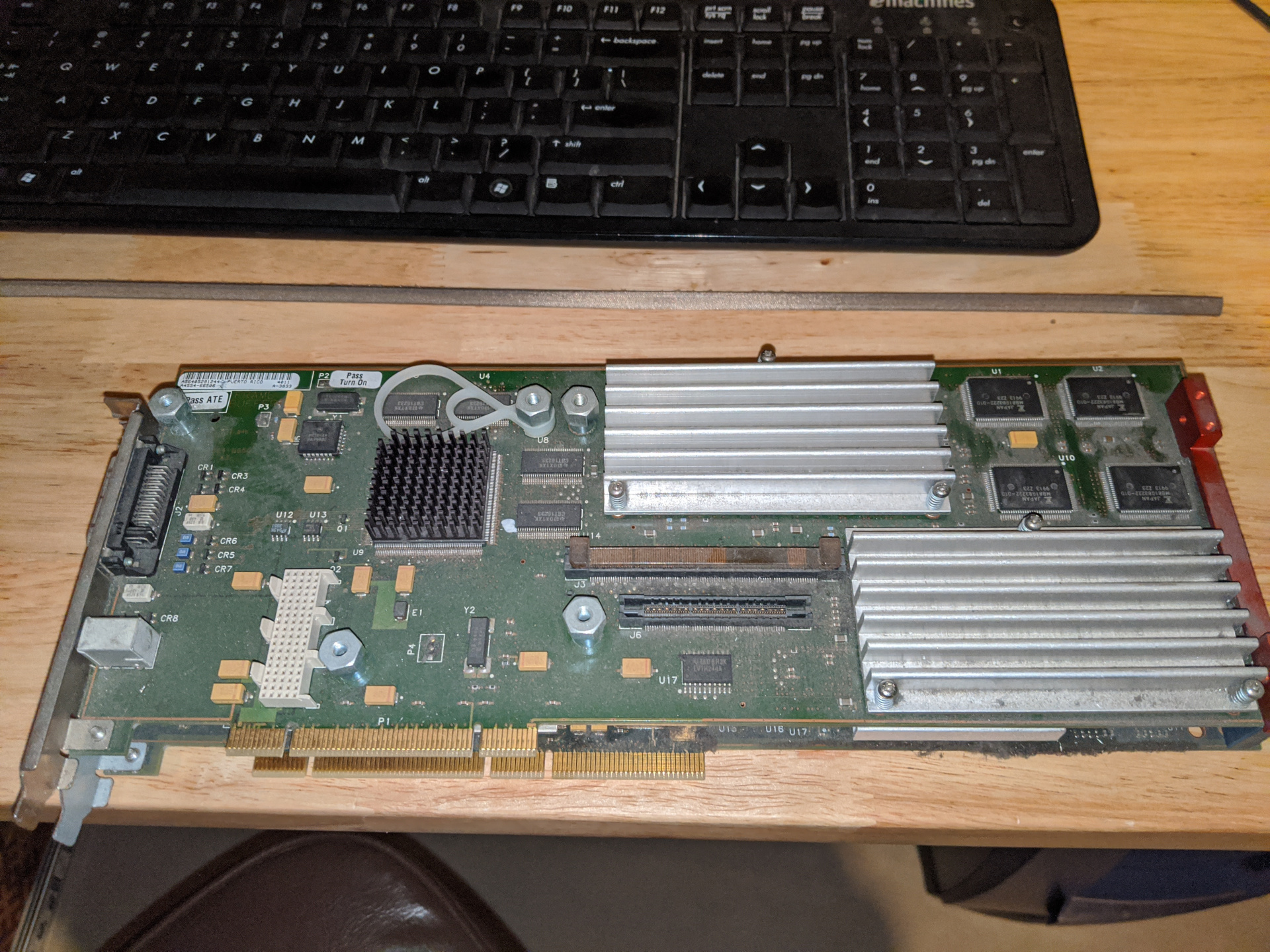So back around Christmas I purchased an HP J5600 off mopar, and unfortunately I didn't have much time to play with it then. However, now I have a bit more time, so I decided to poke around the hardware a bit more, and in the process I've uncovered a few interesting things. However, I can't seem to find any sort of information about these in HP's manuals and documents, so I've decided to ask and see if maybe you guys know a bit more.

Mystery #1:
Here's a datasheet from 1999 with specifications for a lower-end J5000
Here's a later datasheet from 2001 with specs for the J5600
Mine has the 552MHz processors listed in the 2001 datasheet, but has two of the HP fx6 graphics accelerators (with texture boards) from the 1999 datasheet. Of the two OEM drives in the system, both are 9GB 7.2k drives which aren't listed in either datasheet, with the closest being the 9GB 10k drives listed in the 1999 datasheet. It also came pre-loaded with HP-UX 10.20 and configured to not run an X-server. One possibility is that it was a later model that was special ordered with fx6 GPUs and HP-UX 10.20 to act as a compatible replacement for an older machine (perhaps as a rendering server?) Unfortunately any useful information had been scrubbed off the drives and all that was left was the OS. The other theory I had was that it was an early model of the J5600, but I've been unable to find an earlier version of the J5600 datasheet.
Mystery #2:
On the very back of one of the FX6 cards, there are two RJ45 jacks underneath a sticker that says
Quote:REMOVE LABEL FOR COVE MODE
Do not use ports for normal operation.
This is on the secondary texture accelerator board that plugs into the main graphics accelerator. The only reference I've found to "Cove Mode" is a brief mention on the PA-RISC linux wiki on the page "VisualizeFX"; however this only mentions it in passing and doesn't provide any information as to what it does. A quick search of the FX6 manual revealed no information, nor did a search of the J5600 manual. Perhaps of note is that this only on the card that was installed in the "primary graphics" slot. My second FX6 gpu does not have it. Does anyone know what "Cove Mode" is, what these connectors could do, or how you could interface with them?

Mystery #3:
The J5600 has 8x 64-bit PCI slots. Of these, slots #4 and #7 are faster 66MHz 3.3V slots, with slot #7 being the primary graphics slot, and slot #4 being either the preferred slot for secondary graphics or for a high bandwidth IO card (such as a 1000-base-T ethernet card). However, slot #1 is mentioned as being "Power Only", and in most places that the J5600 manual mentions PCI slots, there's a warning
Quote:Slot 1 is reserved for power only. An IO card should not be installed in Slot 1.
My initial theory was that this might have been intended for texture accelerator boards that connected to the main FX cards, as they would get their data from the card but still need to draw power. However, the texture accelerators are placed in the slot below the main PCB, although there are connectors on the top of the fx6 that perhaps suggest you could put another board of some sort on top of it. However, even if it was for a board card that went above an FX card, the secondary graphics slot is slot #4, not slot #2, so there wouldn't be a way to put a card in it anyways. So, does anyone know of a PCI card that only drew power from a PCI slot? (perhaps as some part of a multi-card assembly?)

Here's a picture of the FX6 with the connectors on the top of it.
Any input with some of these would be appreciated, as I want to know more about this machine but can't seem to find anything.
![[Image: collection.png]](https://jurassic.nl/images/collection.png)